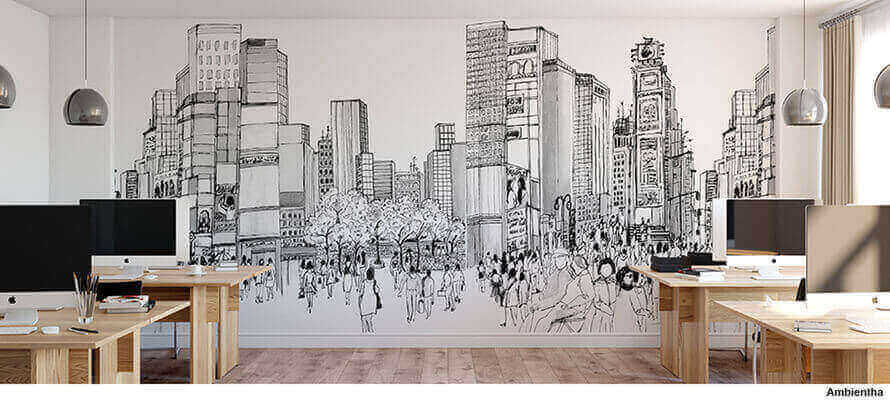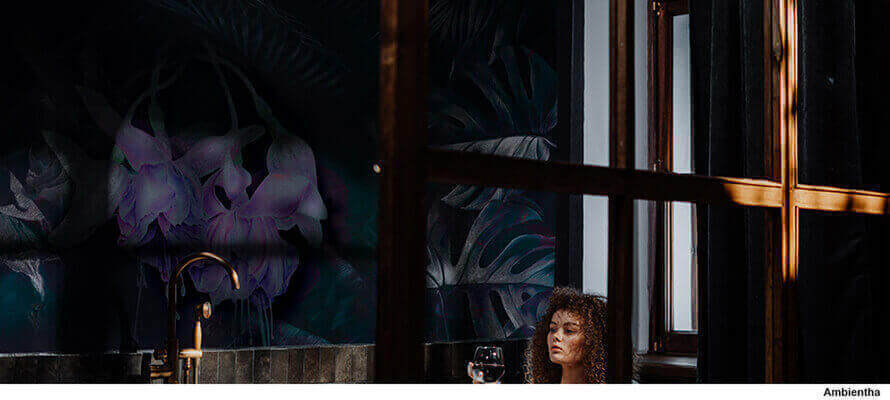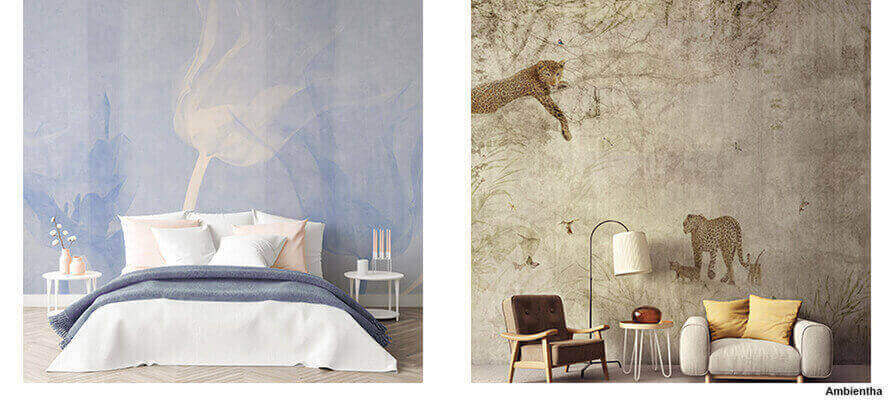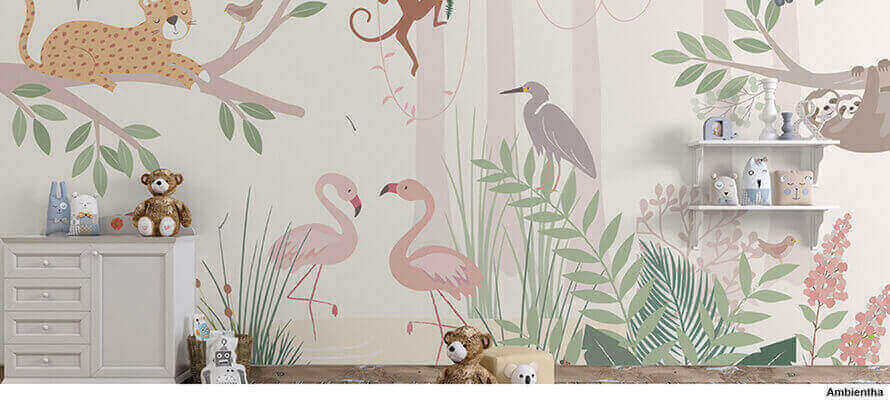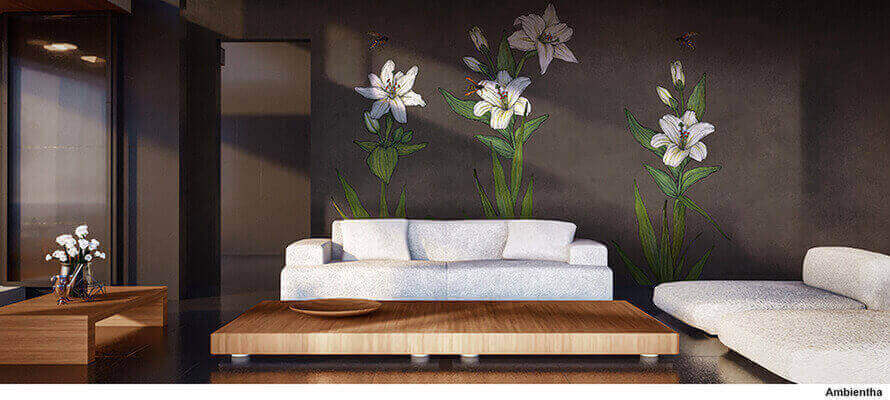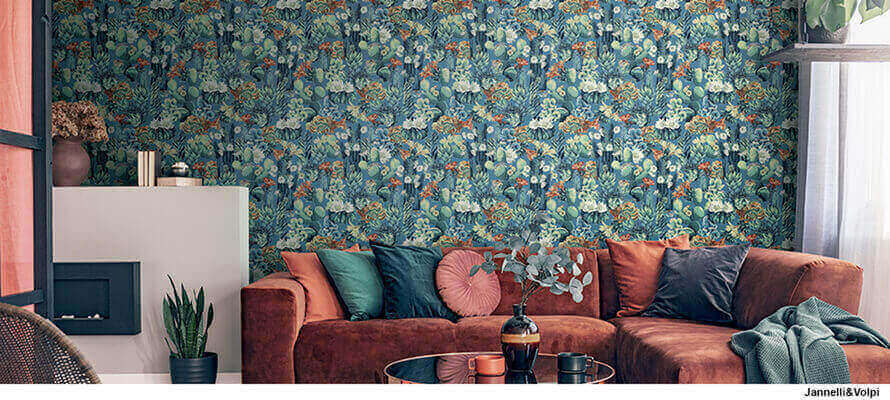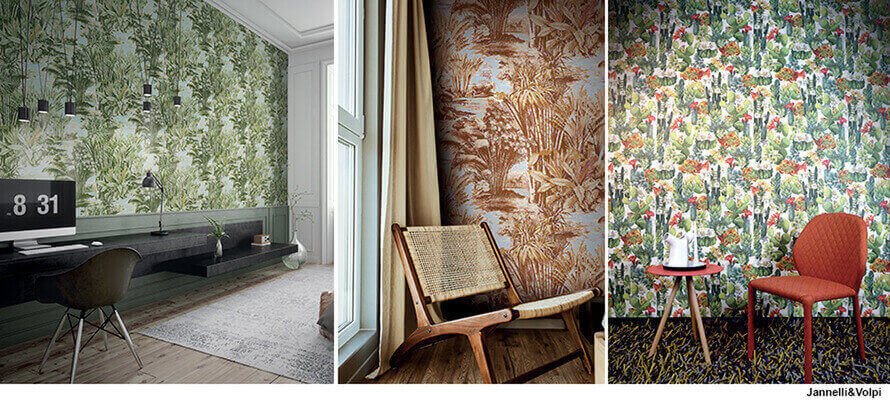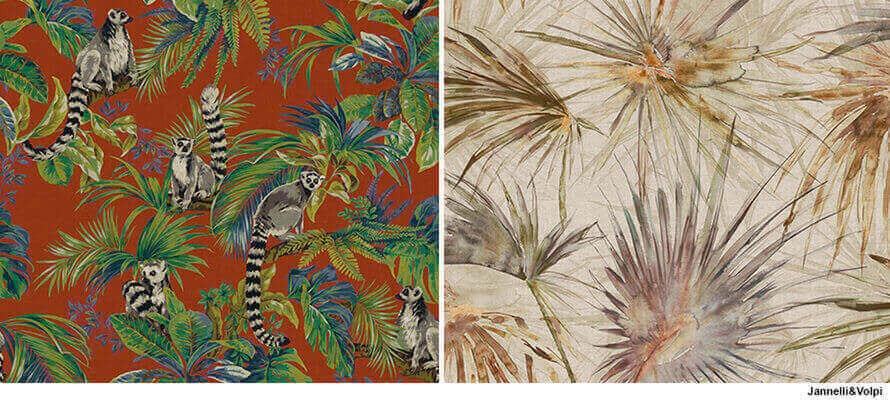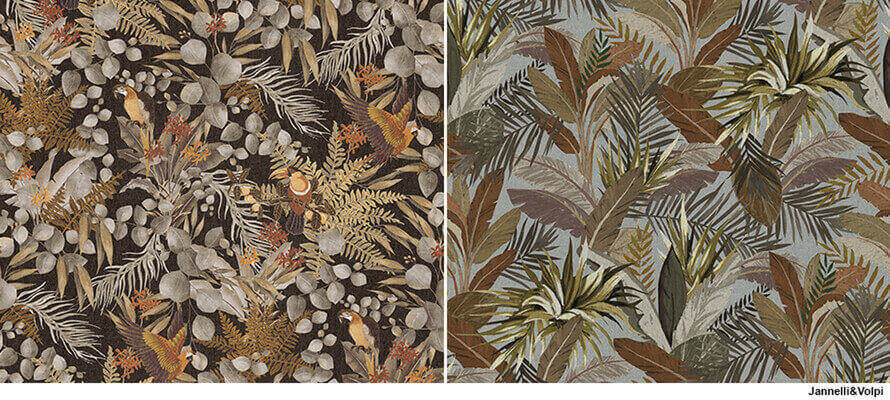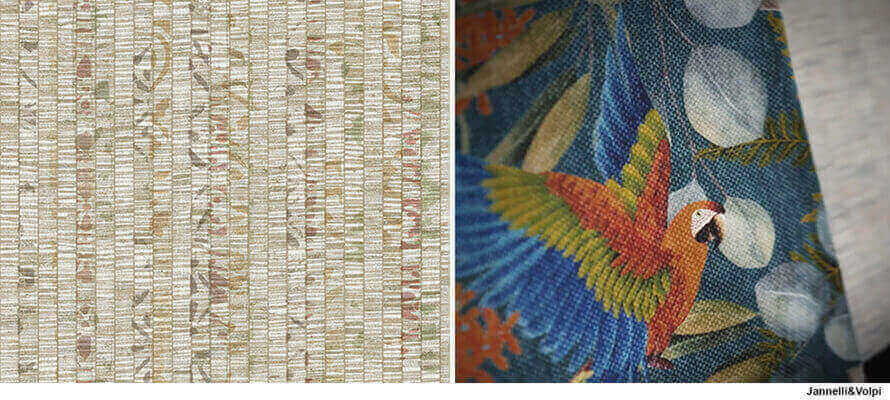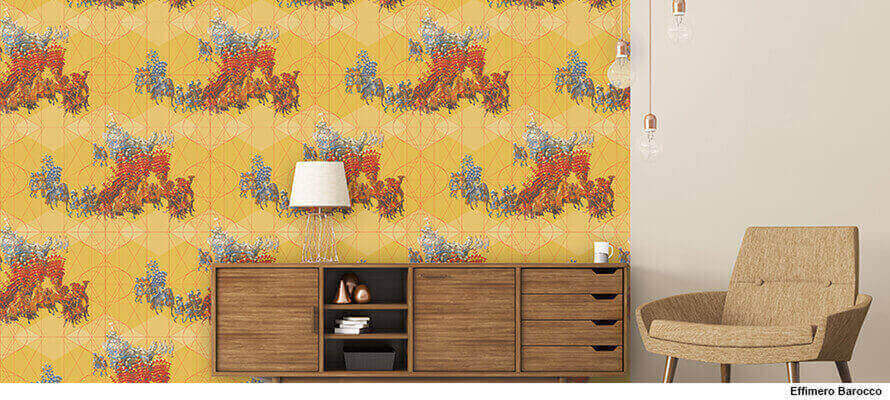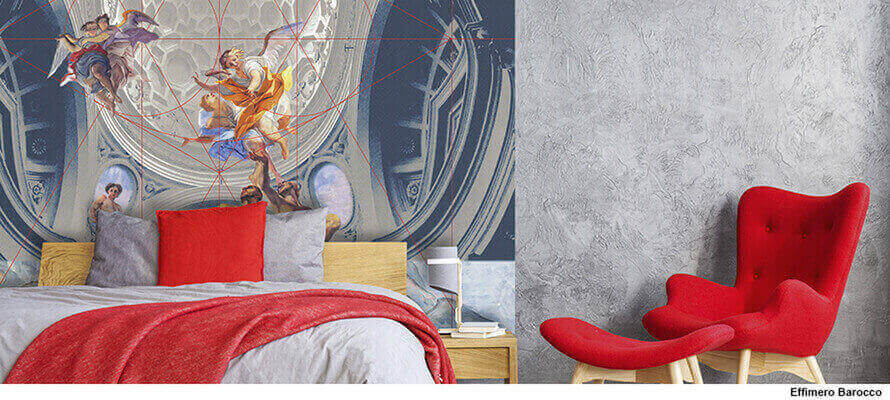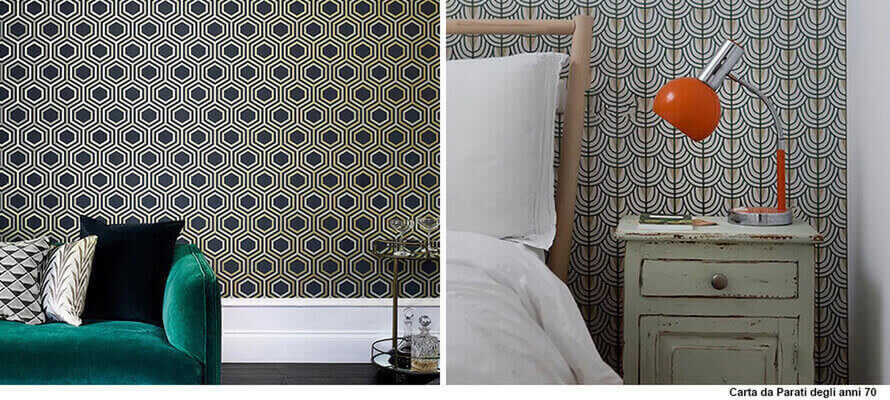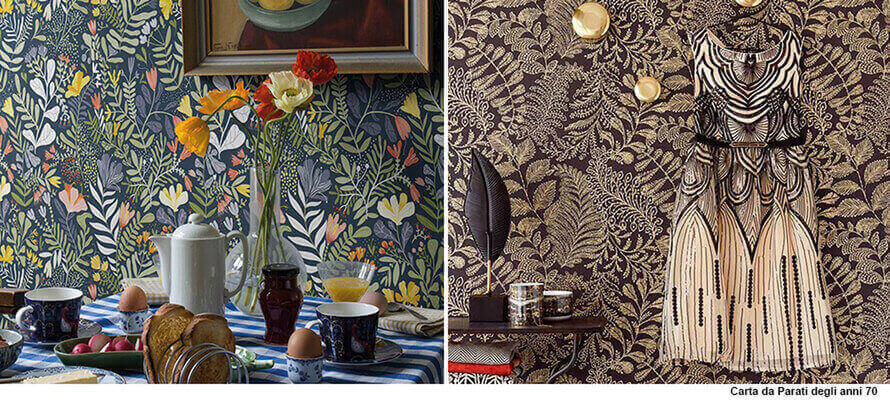Dont't call it tappezzeria
Forget the endlessly repeated patterns of the past. Today, thanks to technological advances and large-format digital printing, wallpapers are transformed into a modern version of frescoes and accommodate large-sized graphic subjects. What’s more, new sustainable and high-performance materials are making their way into every environment in the home, contract and retail worlds. We talked about the latest innovations and trends in the sector with Paola Jannelli of Jannelli&Volpi, Camillo Beretta of Carta da Parati degli anni 70, Alessandra Nazzari of Ambientha and Cecilia Anselmi of Effimero Barocco.
By Caterina Pucci | On PRINTlovers #86
Once known as “tappezzeria”, today Italian prefers the English term “wallpaper”. Whatever you want to call it, wallpaper - for years associated with grandmother’s living rooms - has once again become a characteristic element of interior decoration, able to give personality to any space, public or private. The credit for this goes to designers and architects who have started to promote its use again and also to technological innovation. Traditional roll-to-roll printing remains the most suitable method for achieving high print runs with the same decorative motifs, but it has several limitations in terms of creativity. On the other hand, wide-format digital printing solutions make it possible to get around the size limits imposed by classic cylinders while reducing the start-up costs linked to the production of dies. The development of new substrates and advances in digital technologies have enabled wallpapers to be transformed into customised decorations so that walls are filled with large format images embellished with textures and three-dimensional details.
Uses can include previously unthinkable places such as the ceiling, the kitchen, the bathroom or an outdoor wall. This is because the new wallpapers are designed to be soundproof, fireproof, washable and moisture-resistant.
But above all, they are sustainable not to disappoint users who are increasingly attentive to environmental impact and safety.
—
Taking refuge in nature
The floral and botanical motifs that had already characterised the wallpaper in 2019/20 will be the stars again this year, underlining a common desire to escape and flee from everyday life. The evocation of uncontaminated nature and distant cultures is the leitmotif of Jannelli&Volpi’s Lemuria collection, a tribute to Madagascar’s brilliant nature. The historic manufacturer of wallcoverings and wallpapers is targeting a high-end international market, particularly in the contract sector. “The present seems to communicate to us that our choices as individuals are inextricably linked to the environment around us,” says Paola Jannelli, Creative Director of J&V. “The new collections are based on the conviction that only the coexistence of human beings and nature can give us a better future. Customers ask us to enhance their home environments to improve their quality of life. There is great attention to sustainability, a value that has always distinguished us.” A commitment that for Jannelli&Volpi is expressed in the adaptation of production facilities, the use of water-based dyes and the promotion of reuse. During the lockdown period,” continues Jannelli, “we created two products that sum up our environmental commitment: one is EcoTechWall, a substrate that provides the same performance as vinyl in terms of elasticity, resistance to washing and fire, and the possibility of embossing, but is totally PVC free. The other is Viroblock, an antiviral and antimicrobial finish, combined with our new Tatami collection. In practice, we use silver crystal treatment in the product mix to prevent any bacteria from attaching themselves to the lipid component that is generated when they come into contact with the walls, preventing them from duplicating themselves.”
—
Retro inspiration - in retail like in the cinema
Another must that will dominate interior decoration is the revival of graphics and inspirations from the past. The retro style of the Seventies (but also the Nineties) will be one of the main influences on interior design in 2021. From the point of view of colours and graphics, there is an attempt to capture the attention of the observer: wallpaper is no longer perceived as a simple background but must focus observers’ attention and “immerse” them in the desired atmosphere. Instead of decorating all the walls, you choose to highlight just one of them with a wallpaper model with strong motifs and large dimensions. Camillo Beretta, Marketing Manager of Carta da Parati degli anni 70, a German-based e-commerce company that produces wallpaper combining authentic vintage designs with modern materials and the strictest German quality and safety standards, tells us all about it. “Wallpaper is very often seen as a work of art. Modern printing techniques allow colours, reflections and details that were once impossible, creating patterns that are a contemporary version of the fresco of past centuries.” The business model of Carta da Parati degli anni 70 is to offer a small selection of high-quality patterns with great attention to detail. In addition to private individuals, many customers come from the worlds of retail, fashion and film production companies. These include Netflix, who used some of their papers to set up the sets for the series The Queen’s Gambit. “Although we work exclusively online, our service replicates that of classic boutiques, where you go because someone - whose taste you trust - has already selected the most suitable product for your needs from a sea of products,” explains Beretta. Along with retro inspirations, fast delivery times and compliance with strict safety standards are among the most popular requirements in interior décor for point-of-sale decoration. A sector where, with the advent of digitalisation, there is a need to combine the reasoning behind design with that behind logistics. A common problem for many retailers is the need to protect the wireless POS at the checkout from interference caused by RFID tags, which are affixed to the products for track&tracing reasons,” explains Beretta. “This is why we developed the Guardia wallpaper collection, which offers effective protection against electromagnetic radiation and electrosmog.
—
Personalisation for storytelling decoration
The pandemic has undoubtedly changed the way we experience space. There is a need to find stimulating atmospheres in everyday spaces, environments rich in personality, capable of transmitting calm, creativity and resilience. Even in interior decoration, the concept of personalisation and tailoring each project like a bespoke suit remains fundamental. This is the mission that Ambientha, a start-up founded in 2019 by Maurizio and Alessandra Nazzari, father and daughter, has set itself. The project draws on the many years of experience in graphic design and communication of CIP srl, a company working in the graphic decoration of showrooms, trade fairs and conferences since the 1960s. In the e-shop, each user can choose from dozens of different collections or design their own personalised wallpaper. “Biophilic design is looking for more and more forms of expression to respond to the goal of bringing nature into the interiors of our homes,” explains Alessandra Nazzari, “just as wallpaper designs, printed on eco-sustainable substrates, are conceived to create fascinating green corners: plants and real natural sceneries to create welcoming and restful atmospheres”.
For Ambientha, it is crucial that the design and decoration in our homes reflect the current style, but not only that. The aim is to create wallpapers that take inspiration from the world around us and tell stories, which is why we like to talk about storytelling decorations. “In our creative process, the study of interior design trends becomes the basis for the development of inspirations: the collections in this way are not really annual but develop over the years with new formulations and points of view,” continues Nazzari. “In 2019, the first inspirations were global warming, the protection of biodiversity in the Amazon, and even Italy’s hidden treasures, our beautiful villages.” Ranging from the world of childhood to the importance of renewable resources, the company has designed a new series of themed collections - Beauty Variety, Mediterranea, Underseas and The World Through - that aim to inspire a future of justice, serenity, beauty and love. Compared to the wallpaper of once upon a time, the latest generation of wallpapers uses more high-performance substrates. One of the most sought-after is non-woven fabric (“TNT” in Italian), with FSC mixed certification, which ensures high dimensional stability and elegant material finishes with a matt effect. “Our non-woven papers are highly appreciated because they are breathable and PVC free, ideal for residential environments and especially for bedrooms,” explains Nazzari. Fibreglass is also very popular, suitably treated to become waterproof and therefore suitable for application in damp environments (such as bathrooms) or outdoors (on terraces).
—
Down with minimalism, long live art
Another trend concerns the abandonment of minimal modernism, often officially approved and characterless, in favour of a mixture of styles. A need that goes hand in hand with a general demand for greater customisation, which progress in the field of graphics and digital technologies has made possible. These suggestions led to the idea of Effimero Barocco, a collection of digital graphics designed for interior décor and reproduction on substrates such as wallpaper, upholstery, and fabrics. The project is the work of architects Cecilia Anselmi, Carlo Pianosi and Fabio Gasparri, who are passionate about art, photography and graphics. “Carlo works a lot in interior design, Fabio is also a photographer and has a fashion design brand,” explains Anselmi, “and as for me, since 2015 I have been carrying out graphic research with the processing of digital images - the Red Line collage series - which made its debut in 2018 with an exhibition in Rome entitled Concetto Lineare (Linear Concept) and which has found its natural continuation in this new collection of designs.
The Effimero Barocco wallcovering project pays homage to the iconography of the Baroque era and Rome but is also a contemporary reworking of fragments of images from that period collected by the three designers. Digital printing has made it possible to reproduce the images in different formats and on other materials: from PVC-free non-wovens to vinyl, printed with eco-friendly inks. The technical partner of the project is Decorum Wallcoverings & JdS StudioDesign, thanks to who the graphics can be reproduced on different scales on any type of wallpaper. “Effimero Barocco is a project designed to adapt to printing on other substrates while maintaining a certain margin of customisation,” adds Anselmi. “What inspired us were the visionary collections of Piero Fornasetti, the geometric patterns of Giò Ponti, the surreal juxtapositions of Carlo Mollino, and the abstract forms of Baroque sculpture and architecture, which Luigi Moretti wrote about.” Effimero Barocco was presented at the end of October 2020 on the occasion of the Rome Art Week at Studio Room 28b to an audience of insiders with an installation dedicated to prints of some wallpaper prototypes. After a phase of fine-tuning and testing the graphic part and the qualitative yield on different substrates, the team is now working on an e-commerce platform. A proposal that does not reject the new but rather seeks to contaminate it, reaffirming that art, in all its eras, is an inexhaustible source of inspiration both for reinventing the present in a vitalistic way and for imagining the future. Even if only from the walls.
